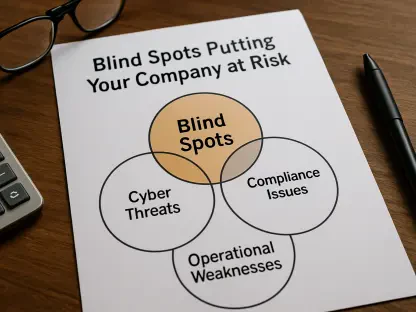In the ever-evolving landscape of digital advertising, ensuring brand safety—keeping a company’s reputation untarnished by avoiding association with harmful or inappropriate content—has become a paramount concern for businesses worldwide. A groundbreaking study by Zefr, a company specializing in AI-driven brand protection, sheds light on a critical dilemma facing advertisers today: should they rely on human moderators or artificial intelligence (AI) to safeguard their image? The research, presented at a prominent computer vision conference workshop this year, uncovers a striking disparity between the two approaches. While human moderators demonstrate exceptional accuracy in identifying problematic content, their exorbitant costs pose a significant barrier to scalability. This tension between precision and affordability raises pressing questions for brands navigating the complex world of online content, where a single misstep can lead to reputational disaster.
The Critical Role of Brand Safety in Advertising
In an era where digital content proliferates at an unprecedented rate, the concept of brand safety stands as a cornerstone for advertisers aiming to protect their public image. This goes beyond general content moderation on social platforms; it specifically focuses on ensuring advertisements do not appear alongside material involving violence, explicit themes, or polarizing political issues. The challenge lies in sifting through vast amounts of video content, analyzing text, audio, and visuals to detect policy violations. Zefr’s study tackles this head-on by evaluating both human reviewers and advanced AI systems, known as multimodal large language models (MLLMs), using a dataset of 1,500 videos categorized into sensitive topics like drugs, conflict, and children’s content. The results highlight the high stakes for brands, where failing to catch inappropriate associations can lead to public backlash and financial loss, underscoring the urgent need for effective moderation strategies in today’s hyper-connected digital environment.
Moreover, the complexity of modern content demands a nuanced approach to moderation that can adapt to cultural and linguistic variations. Advertisers face mounting pressure to align their campaigns with societal values while avoiding controversies that could alienate their audience. The dataset used in the study reveals just how intricate this task can be, with videos spanning diverse contexts that often require deep contextual understanding to classify correctly. For brands operating on a global scale, the risk of misinterpretation is amplified, as content that seems harmless in one region might be deemed offensive in another. This dynamic landscape sets the stage for comparing human and AI capabilities, as companies seek solutions that not only maintain their reputation but also fit within operational budgets, balancing ethical imperatives with practical constraints in an increasingly competitive market.
Human Moderators: Unmatched Accuracy at a Steep Price
When it comes to precision, human moderators reign supreme in the realm of content moderation for brand safety. According to Zefr’s findings, humans achieve near-perfect scores across key metrics: precision at 0.98, recall at 0.97, and an F1 score of 0.98, which reflects a balanced performance between the two. This exceptional accuracy stems from their ability to interpret subtle nuances, cultural references, and contextual cues that often elude automated systems. For instance, humans can correctly assess content in non-English languages or recognize when a video’s tone shifts in ways that defy algorithmic logic. Such proficiency ensures that brands are shielded from inappropriate associations with a level of reliability that remains unmatched, making human oversight a critical asset in high-stakes advertising environments where errors carry significant consequences.
However, this unparalleled expertise comes with a prohibitive financial burden that limits its feasibility for widespread use. The study reveals that human moderation costs a staggering $974 per task, an expense that quickly becomes unsustainable for companies dealing with large volumes of content. This price tag—nearly 40 times higher than the most affordable AI alternatives—poses a daunting challenge for advertisers who must moderate thousands, if not millions, of videos to maintain brand safety. While the quality of human judgment is indisputable, the economic reality forces businesses to reconsider reliance on manual processes, especially in an industry where budgets are often stretched thin. This cost disparity drives the exploration of AI as a potential solution, despite its acknowledged shortcomings, as brands grapple with finding a viable balance between quality and affordability.
AI’s Promise: Cost-Effective but Flawed
Turning to artificial intelligence, the appeal of affordability becomes immediately apparent in the context of content moderation. Zefr’s research evaluated six AI models, including GPT-4o-mini, Gemini-2.0-Flash, and Llama-3.2-11B-Vision, uncovering significant cost savings with options as low as $25 per task for compact models like GPT-4o-mini. Notably, smaller-scale systems often deliver performance comparable to their more expensive counterparts, with top performers like Gemini-2.0-Flash achieving F1 scores of 0.91. This scalability and low cost make AI an attractive option for advertisers managing extensive datasets, allowing rapid processing of content at a fraction of the expense associated with human labor. For budget-conscious brands, these figures represent a compelling case for integrating AI into moderation workflows to handle the sheer volume of digital material.
Yet, the affordability of AI comes with notable drawbacks that cannot be overlooked when prioritizing brand safety. The study highlights persistent limitations in AI’s ability to handle complex, context-dependent content, often resulting in misclassifications that jeopardize a brand’s reputation. Errors such as false positives—flagging safe content as harmful—and false negatives—missing problematic material—are common, particularly with non-English content or culturally specific scenarios. For example, AI models struggled with a Japanese video on caffeine addiction, incorrectly categorizing it due to linguistic and contextual blind spots. While AI excels in efficiency, its highest F1 scores still lag behind human benchmarks, revealing a gap in reliability that poses risks for advertisers. This underscores the technology’s current inability to fully replicate human judgment in nuanced situations, prompting a reevaluation of its standalone use.
Blending Strengths: The Hybrid Model Emerges
Amid the stark contrasts between human and AI moderation, a hybrid approach surfaces as a pragmatic solution to balance accuracy with cost. This strategy utilizes AI for initial content filtering, capitalizing on its speed and affordability to process large volumes of material efficiently. Human reviewers are then deployed for more intricate cases where contextual understanding or cultural sensitivity is paramount, ensuring precision where it matters most. Zefr’s Chief AI Officer, Jon Morra, advocates for this combined model, emphasizing how it harnesses the scalability of AI while retaining the critical insight of human oversight. For advertisers, this offers a middle ground, mitigating the financial strain of full human moderation while addressing the error risks inherent in pure AI systems, potentially transforming content moderation practices.
Furthermore, adopting a hybrid framework aligns with the evolving needs of the advertising industry, where flexibility and adaptability are key to managing diverse content landscapes. By allocating AI to routine tasks and reserving human expertise for ambiguous or high-risk scenarios, companies can optimize resources without compromising on brand safety standards. This approach also allows for continuous improvement, as AI systems can be trained on human-reviewed data to enhance future performance, narrowing the gap in accuracy over time. The hybrid model not only addresses immediate cost-quality trade-offs but also positions brands to scale moderation efforts in response to growing digital content demands. As such, it represents a forward-thinking strategy that could redefine how advertisers protect their image in an increasingly complex online environment.
Shaping the Path Forward for Content Moderation
Reflecting on the insights from Zefr’s study, it becomes evident that the journey to effective content moderation reveals critical trade-offs between human precision and AI efficiency. Human moderators set an unmatched standard for accuracy, ensuring brand safety with near-flawless detection of problematic content, yet their high costs limit their practicality for large-scale operations. Meanwhile, AI offers a glimpse of scalability and affordability, though its struggles with nuanced content expose vulnerabilities that cannot be ignored. These findings paint a clear picture of an industry at a crossroads, compelled to innovate amid rising content volumes and heightened cultural sensitivities.
Looking ahead, the hybrid model stands as a promising avenue for advertisers to explore in the quest for sustainable brand safety solutions. By integrating AI’s capacity for bulk processing with targeted human intervention, companies can strive for a balanced approach that mitigates risks while managing expenses. Further investment in refining AI capabilities, particularly in linguistic and contextual understanding, could elevate its reliability in the coming years. As the digital landscape continues to expand, embracing adaptive strategies will be essential for brands to safeguard their reputation without breaking the bank, ensuring they remain agile in a world of ever-shifting content dynamics.









